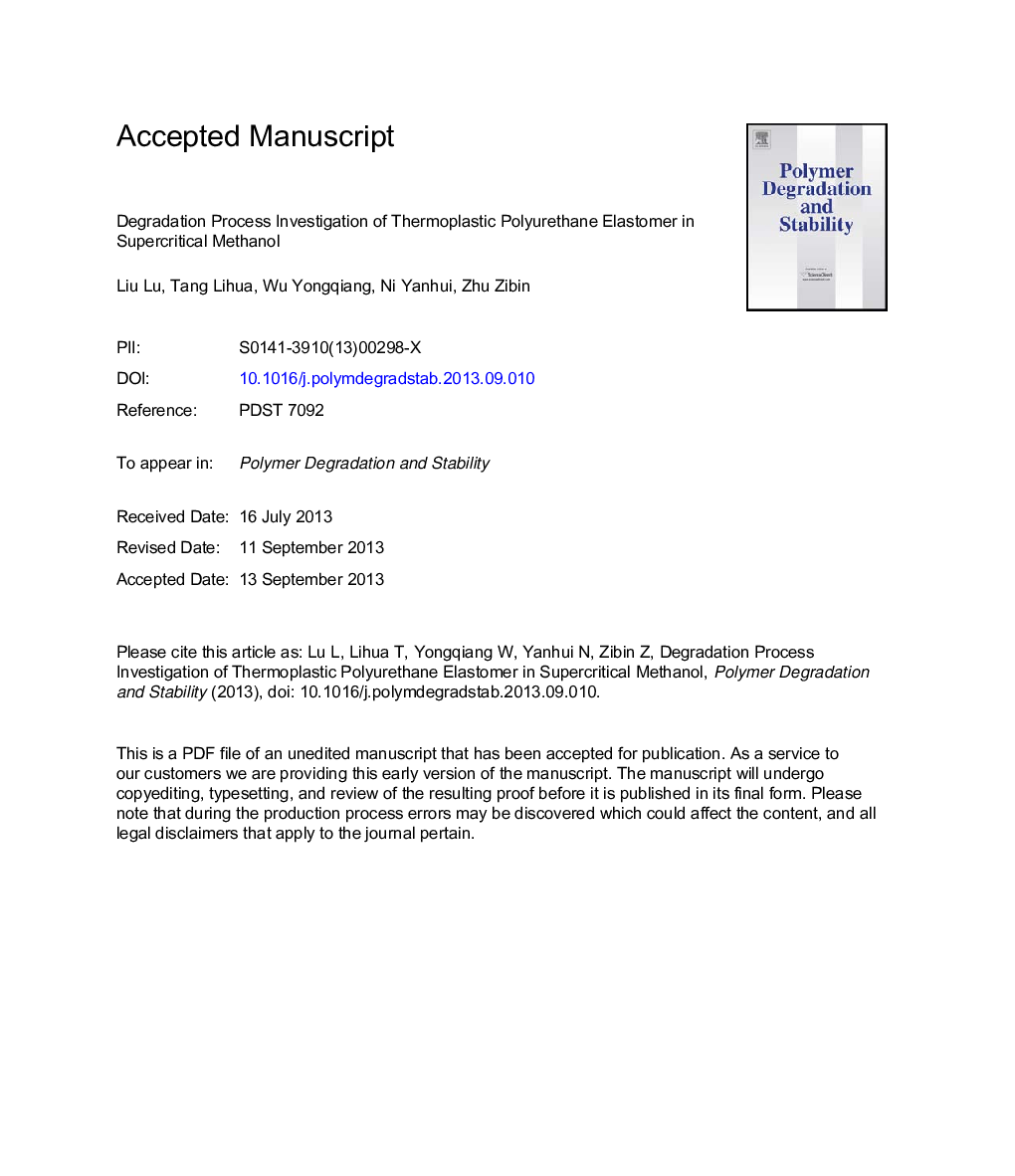| Article ID | Journal | Published Year | Pages | File Type |
|---|---|---|---|---|
| 5202163 | Polymer Degradation and Stability | 2013 | 35 Pages |
Abstract
The depolymerization of thermoplastic polyurethane elastomer (TPU) was investigated in sub- and supercritical methanol. The raw TPU was based on 4,4â²-diphenylmethane diisocyanate (MDI), poly(1,4-butylene adipate) (PBA) and extended with 1,4-butanediol (BDO). GC-MS, IR were used in product analysis which shown that the degradation products consisted of the monomers of TPU and their methylates. The quantitative analytical approaches were internal standard method of GC-FID and external standard method of HPLC-UV after derivatization with methanol. The morphological change of the reaction residues in degradation process was observed by SEM, combined with the influences of the degradation temperature and time, the depolymerization mechanisms were proposed, i.e. in HTHP methanol, the degradation started with the broken of the urethane group, the chain of TPU was separated into soft segment and hard segment by transesterification. Subsequently, the transesterification acted between methanol with the urethane group of the hard segment and the ester group of the soft segment, respectively. In the subcritical region, the main products were BDO, dimethyl adipate (DMA), and 4,4â²-methylene diphenyl carbamate (MDC) which can be used in the innocuous production of MDI; and BDO, DMA, amines, tetrahydrofuran (THF), macrolides were mainly obtained in supercritical region.
Related Topics
Physical Sciences and Engineering
Chemistry
Organic Chemistry
Authors
Lu Liu, Lihua Tang, Yongqiang Wu, Yanhui Ni, Zibin Zhu,
